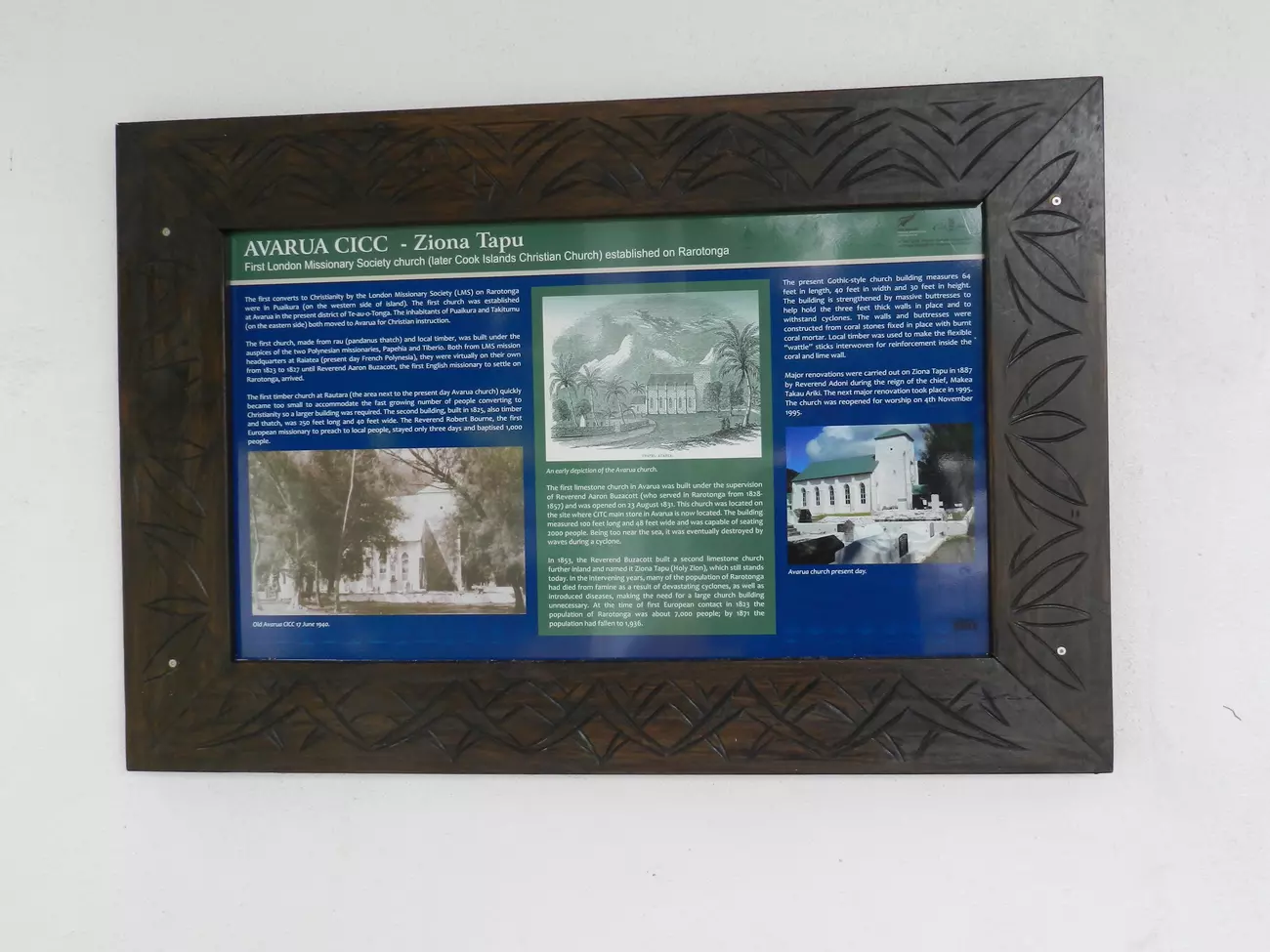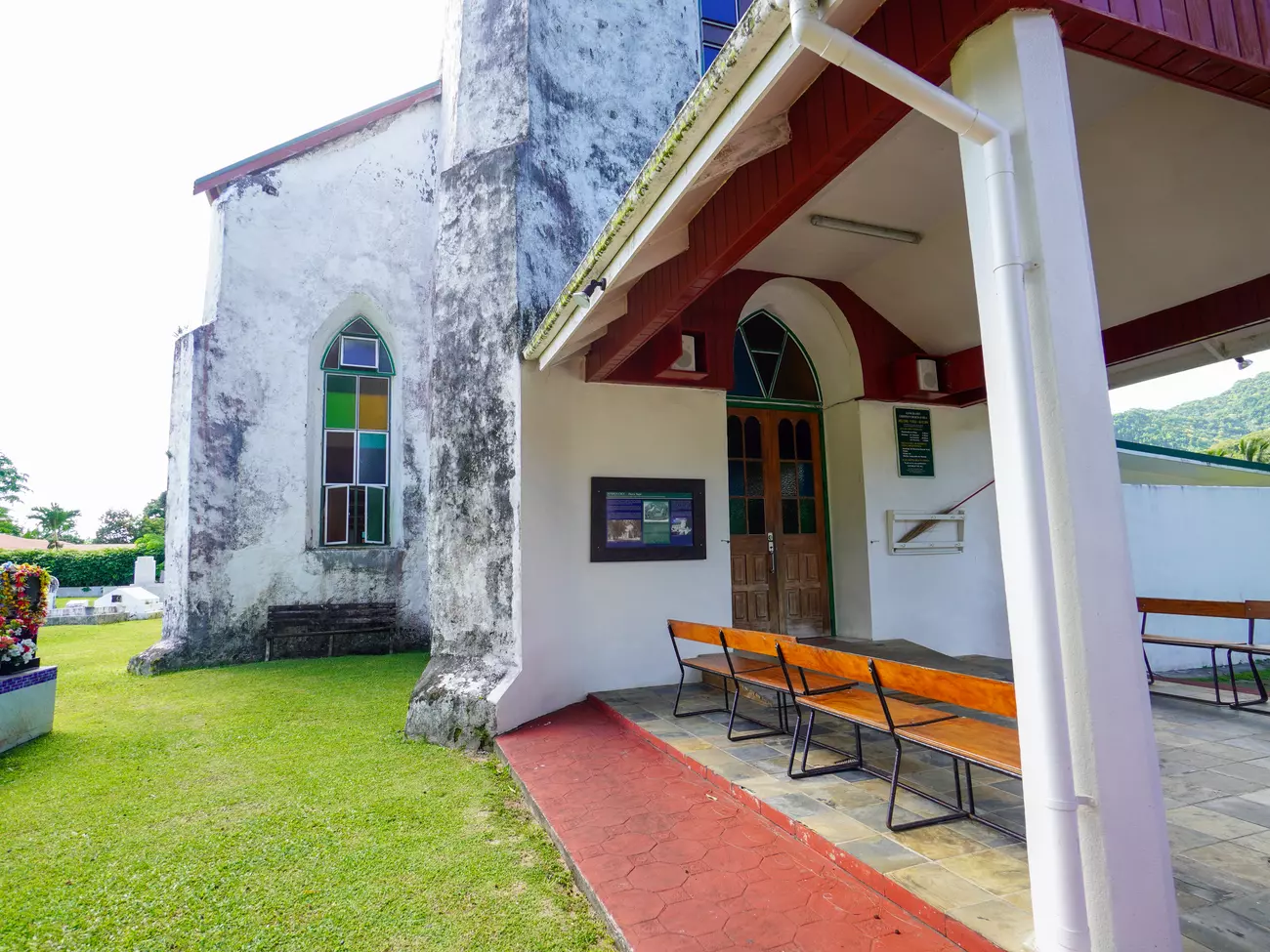First London Missionary Society, later Cook Islands Christian Church (CICC), established on Rarotonga
The first converts to Christianity by the London Missionary Society (LMS) on Rarotonga were in Puaikura (on the western side of the island). The first church was established at Avarua in the present district of Te-au-o-Tonga. The inhabitants of Puaikura and Takitumu (on the eastern side) both moved to Avarua for Christian instruction.
The first church, made from rau (pandanus thatch) and local timber was built under the auspices of the two Polynesian missionaries, Papehia and Tiberio, from the LMS mission headquarters at Raiatea (present day French Polynesia), who were virtually on their own from 1823 to 1827, when Reverend Aaron Buzacott, the first English missionary to settle on Rarotonga, arrived.
The first timber church at Rautara quickly became too small to accommodate the fast growing number of people converting to Christianity so a larger building was required. The second building, built in 1825, also timber and thatch, was 250 feet long and 40 feet wide. The Reverend Robert Bourne, the first European missionary to preach to local people, stayed only three days and baptised 1,000 people.
The first limestone church in Avarua was built under the supervision of Reverend Aaron Buzacott (who served in Rarotonga from 1828-1857) and was opened on 23 August 1831. This church was located on the site where CITC main store in Avarua is now located. The building measured 100 feet long and 48 feet wide and was capable of seating 2000 people. Being too near the sea, it was eventually destroyed by waves during a cyclone.
In 1853, the Reverend Buzacott built a second limestone church further inland and named it Ziona Tapu (Holy Zion), which still stands today. In the intervening years, many of the population or Rarotonga had died from famine as a result of devastating cyclones, as well as introduced diseases, making the need for a large church building unnecessary. At the time of first European contact in 1823 the population of Rarotonga was about 7,000 people; by 1871 the population had fallen to 1,936.
The present Gothic-style church building measures 64 feet in length, 40 feet in width and 30 feet in height. The building is strengthened by massive buttresses to help hold the three feet thick walls in place and to withstand cyclones. The walls and buttresses were constructed from coral stones fixed in place with burnt coral mortar. Local timber was used to make the flexible “wattle” sticks interwoven for reinforcement inside the coral and lime wall.
Major renovations were carried out on Ziona Tapu in 1887 by the Reverend Adoni during the reign of the chief, Makea Takau Ariki. The next major renovation took place in 1995. The church was reopened for worship on 4th November 1995.



